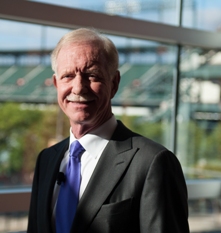Rethinking how we think about preventing harm

Last week the Armstrong Institute, along with our partners at the World Health Organization, had the privilege of hosting more than 200 clinicians, patient advocates, health care leaders and policy makers for our inaugural Forum on Emerging Topics in Patient Safety in Baltimore.
The event featured presentations by international experts in a dozen different industries, including aviation safety expert Captain Chesley “Sully” Sullenberger, a former space shuttle commander and the chief medical officer of the Centers for Medicare & Medicaid Services. Other speakers shared their expertise in education, sociology, engineering, nuclear power and hospitality to see what untapped lessons such fields may hold for health care.
Their collective expertise was breathtaking. What was even more impressive was the obvious enthusiasm and spirit of collaboration embodied by a group joined by a common and noble purpose: to overcome the complex challenges that allow preventable patient harm to persist.
At Johns Hopkins, we’ve already seen what’s possible when health care adopts best practices from other industries. Our work to reduce central line-associated blood stream infections (CLABSI) presents a powerful example. By coupling an aviation-style checklist of best practices to prevent these infections with a culture change program that empowers front-line caregivers to take ownership for patient safety, the program, detailed recently on Health Affairs Blog, has reduced CLABSI in hospital intensive care units across the country by more than 40 percent. Similar results have been replicated in Spain, England, Peru and Pakistan.
That effort succeeded because we challenged and changed paradigms traditionally accepted by the health care community. We helped convince teams that patient harm is preventable, not inevitable. That health care is delivered by an expert team, not a team of experts. And, most importantly, that by working together, health care stakeholders can overcome barriers to improvement.
But if there are to be more national success stories in quality improvement, I believe the health care community will need to examine a few of its other beliefs.

 If you have ever tried to choose a physician or hospital based on publicly available performance measures, you may have felt overwhelmed and confused by what you found online. The Centers for Medicare and Medicaid Services, the Agency for Healthcare Research and Quality, the Joint Commission, the Leapfrog Group, and the National Committee for Quality Assurance, as well as most states and for-profit companies such as Healthgrades and U.S. News and World Report, all offer various measures, ratings, rankings and report cards. Hospitals are even generating their own measures and posting their performance on their websites, typically without validation of their methodology or data.
If you have ever tried to choose a physician or hospital based on publicly available performance measures, you may have felt overwhelmed and confused by what you found online. The Centers for Medicare and Medicaid Services, the Agency for Healthcare Research and Quality, the Joint Commission, the Leapfrog Group, and the National Committee for Quality Assurance, as well as most states and for-profit companies such as Healthgrades and U.S. News and World Report, all offer various measures, ratings, rankings and report cards. Hospitals are even generating their own measures and posting their performance on their websites, typically without validation of their methodology or data.



